Bivariate statistics are about relationships between two different variables. You can plot your individual pairs of measurements as (x, y) coordinates on a scatter diagram. Analysing bivariate data allows you to assess the relationship between the two measured variables; we describe this relationship as correlation.
Scatter diagrams
Perfect positive correlation
r = 1
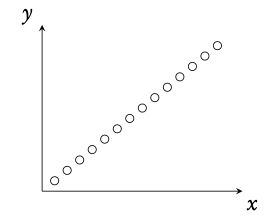
No correlation
r = 0
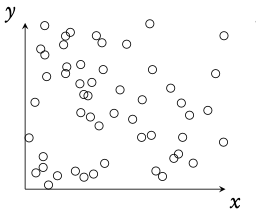
Weak negative correlation
−1 < r < 0
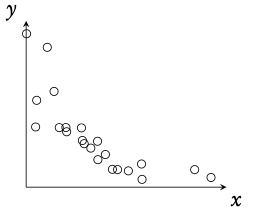
7.4.1 Regression line
The regression line is a linear mathematical model describing the relationship between the two measured variables. This can be used to find an estimated value for points for which we do not have actual data. It is possible to have two different types of regression lines: y on x (equation y = ax + b), which can estimate y given value x, and x on y (equation x = y c + d ), which can estimate x given value y . If the correlation between the data is perfect, then the two regression lines will be the same.
However one has to be careful when extrapolating (going further than the actual data points) as it is open to greater uncertainty. In general, it is safe to say that you should not use your regression line to estimate values outside the range of the data set you based it on.
7.4.2 Pearson’s correlation coefficient (−1 ≤ r ≤ 1)
Besides simply estimating the correlation between two variables from a scatter diagram, you can calculate a value that will describe it in a standardised way. This value is referred to as Pearson’s correlation coefficient (r).
r = 0 means no correlation.
r ± 1 means a perfect positive/negative correlation.
Interpretation of r -values:

Calculate r while finding the regression equation on your GDC. Make sure that STAT DIAGNOSTICS is turned ON (can be found in the MODE settings), otherwise the r − value will not appear.
When asked to “comment on” an r − value make sure to include both, whether the correlation is:
- positive / negative and
- strong / moderate / weak / very weak
Bivariate-statistics type questions
The height of a plant was measured the first 8 weeks

-
Plot a scatter diagram

2. Use the mean point to draw a best fit line
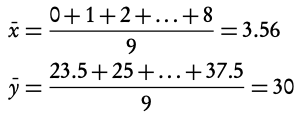
3. Find the equation of the regression line Using GDC
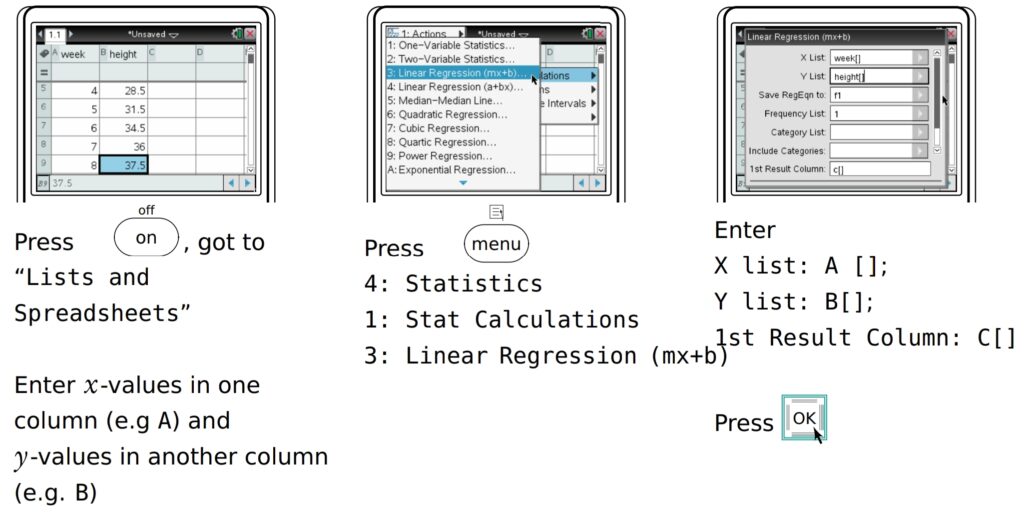
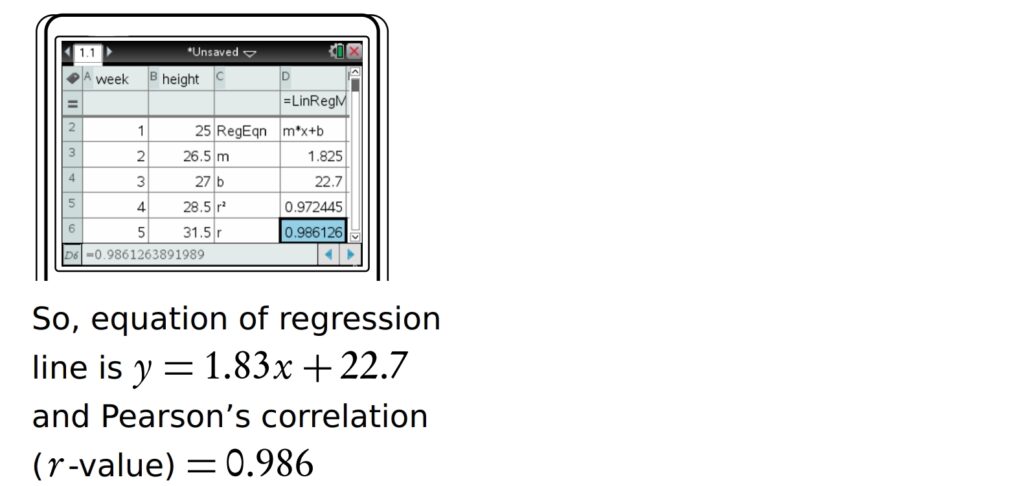
Pearson’s correlation is r = 0.986, which is a strong positive correlation.
